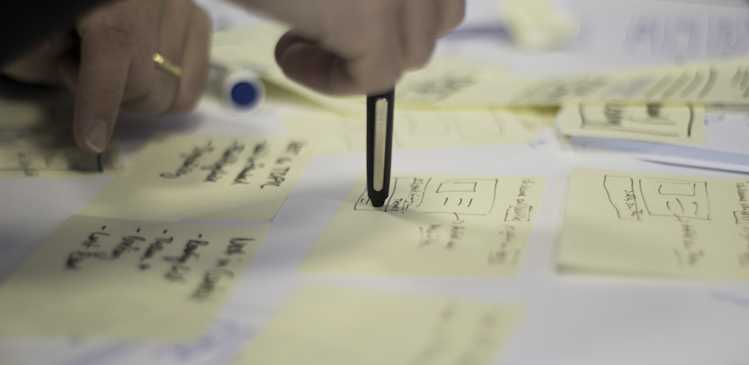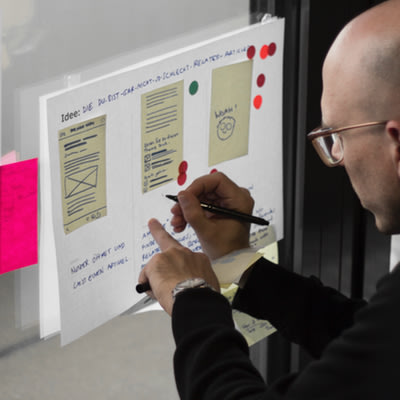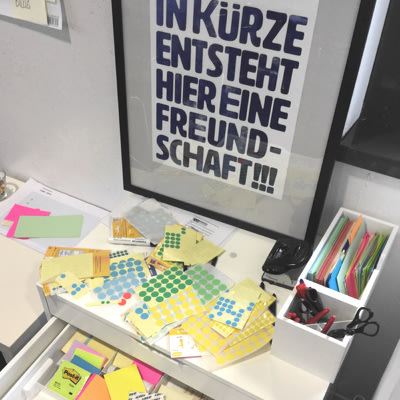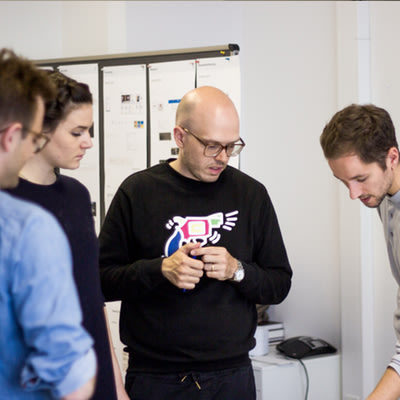Article
Sustainable Solutions: Design Sprints

If you’ve read some of our latest articles and case studies, you might have come across the term Design Sprint: a strong and flexible tool we use to help brands. Design Sprints provide sustainable solutions where it enable brands and organisations to steer their brand digitally into the future. Together with our clients, we construct new methods that help ignite innovation.
Design Sprint is used as an approach to collaborate with in-house teams of our clients’. We guide them on how to efficiently develop new ideas and successfully start projects. In order to get some insight on how Design Sprints actually work, and how they help clients and agencies grow together, we talked to our colleague Moritz
When do you decide to do a Design Sprint with a client?
Usually we are hired to solve a very particular problem for our client, like supporting them with a better user experience on their platform or relaunching their website. Often we find at the beginning of our collaboration that delivering a new design solution might solve their current problem, but it isn’t the most sustainable approach. We all know that today’s digital landscape is shaped by waves of constant change and adaptation whether it be to users’ needs, technical standards or even to organizational changes. This is the point where we usually start talking about our clients’ current challenges in the product development process, and also about what might help their in-house teams to become more confident in handling those challenges better internally.
What does a design sprint with Edenspiekermann usually look like? Is it a one-size-fits-all solution?
No, not at all. It very much depends on the challenges the client is facing. Obviously those can be very different – from internal challenges such as workflows, communication and team setting to external challenges like how to work more user centered or improve conceptual processes. But of course there is a general process for Design Sprints that can be adapted to a variety of potential scenarios. Every phase has a set of methods we choose from, so that each Design Sprint matches our clients’ needs and resources.

Every phase has a set of methods we choose from, so that each Design Sprint matches our clients’ needs and resources.
What challenges can be tackled with a Design Sprint?
Originally it was invented for digital product development. However, you can adapt it to almost every innovation process. A team wants to establish more time and space for user centered thinking; they want to create a deeper understanding for their users or learn how to make better use of the results of a user test. Design Sprint can help rethink internal settings, workflows and even prioritization patterns to enable this change. But another example: Team collaboration! What solutions help bring your internal teams closer together? What strategies can improve communications between teams? How can we improve engagement with designers? The most important precondition for a successful sprint is that everyone needs to have a clear picture of its scope, the context and the desired outcome. Without that, the team will easily get caught up in endless discussions and not be able to make the necessary decisions to solve the challenge.
What are the benefits of a Design Sprint?
First of all, one of the benefits is surely that Design Sprints are very compact and result-oriented formats. We usually go for a weekly sprint. And as prototyping and validation are part of it, the teams we work with, will already walk away with a (low fidelity, but working) prototype they can base their next steps on. For more complex projects, like developing a highly personalized news experience for the new NZZ app, it might take several sprints. To be honest, doing a design sprint is a rather intense experience for all participants – even for us, who run them on a regular basis. But the intensity in the way we work on projects within a Design Sprint is also one of the benefits of it. It helps establish a lot more internal commitment to the project and even to the team. And in the end solving a particular problem with new methods will ultimately empower in-house teams and allow them to grow.
Want help getting started with design sprints? Let's talk!


